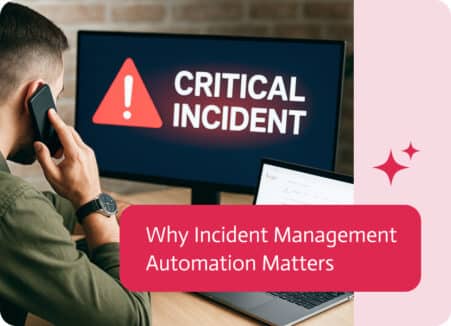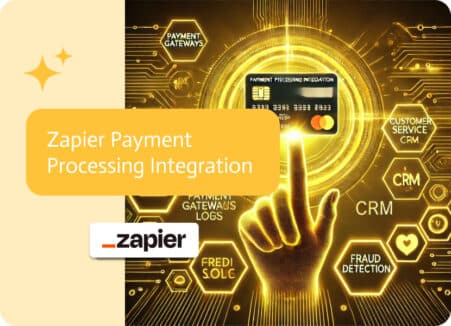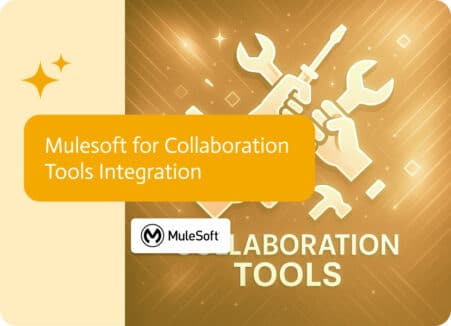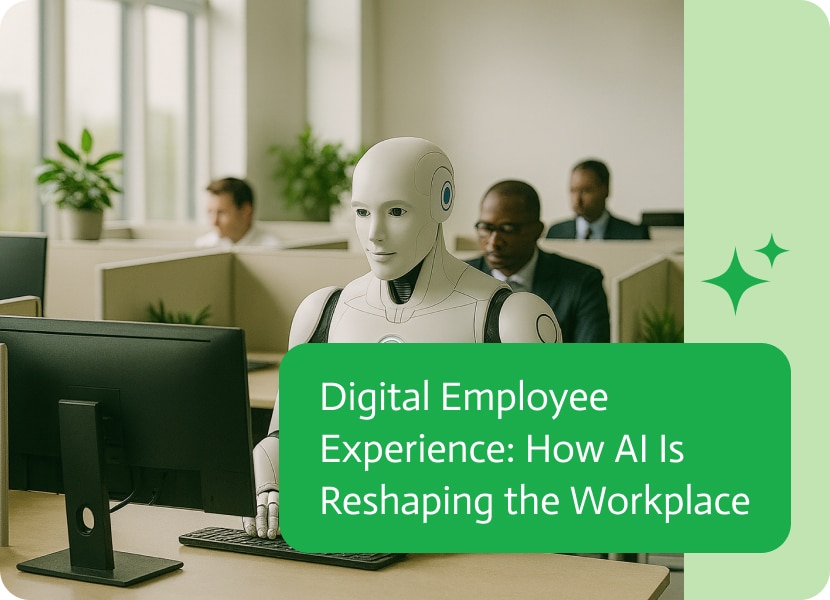
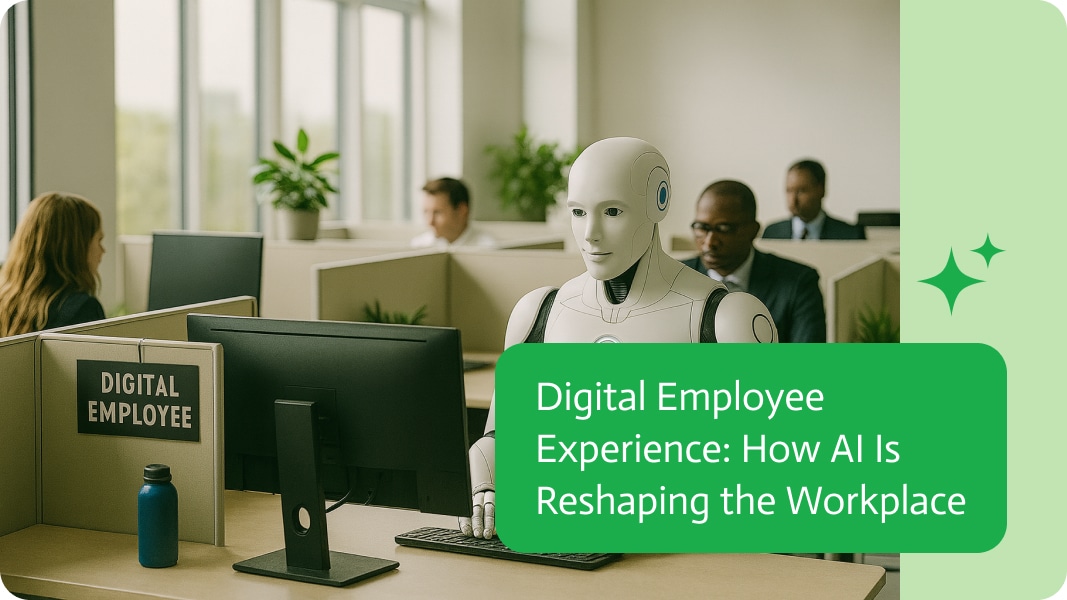
Digital Employee Experience: How Artificial Intelligence Systems Transform the Workplace
The workplace you knew five years ago (cluttered inboxes, endless status meetings, repeatable grunt work) is being quietly redesigned. Not by a single shiny app, but by a new class of digital employees, fully autonomous software colleagues that can take on entire jobs from start to finish: research prospects, open support tickets and chase them to resolution, reconcile invoices, even book meetings and follow up until the deal closes.
These are not assistants that hand you suggestions either; you hire them, train them, give them the access they need, and then let them get to work. This change is already happening everywhere, from big corporations to small startups, and it’s changing what it feels like to go to work.
What Exactly IS a “Digital Employee”?
Think of a digital employee as a software colleague with three practical traits: it has persistent access to the data and tools it needs (CRM, calendar, finance systems), it can plan and chain together multi-step workflows (decide what to do next), and it can execute actions autonomously, not just draft a message, but actually send it, records outcomes, and schedule the next task. Traditional automation ran fixed scripts, these workers reason, call on other software when needed, and change to new inputs while following guardrails you set. Vendors that sell these systems describe them as autonomous digital workers that handle whole job flows rather than discrete tasks.
The Technology Behind a Strong Digital Employee Experience
Three engineering advances made this practical:
- Tool orchestration (function-level APIs): Newer systems can be given a catalog of safe, well-specified actions (think: “search CRM”, “create invoice”, “schedule meeting”). The software can pick the right tool and use it in the right way, which turns chaotic text into reliable actions. This is the plumbing that moves agents from “clever chat” to “practical doer.”
- Contextual memory: To behave usefully, a digital employee must know the company’s facts, contracts, prior conversations, and product specs. Retrieval systems (vector indexes and related search tricks) let the worker fetch the right document snippets quickly, so its answers are based on your company’s data and not just general guesses. That capability is the reason these workers can safely operate on company-specific tasks.
- Agent orchestration stacks: Frameworks and toolkits give engineers patterns for planning, retrying failed steps, splitting large jobs into smaller ones, and supervising multiple concurrent agents. These frameworks are the reason companies moved from lab demos to production deployments in 2024–25.
When you combine those three things, a digital employee can see a request, find the necessary info, plan actions and this can be done throughout numerous systems; then it logs and does safety checks.
What Digital Employees Can Actually Do
If you want a laundry list, here are the practical roles already in production:
- Revenue operations:
Autonomous outreach, qualification, and meeting booking for a sales team from prospect research to calendar invites. Startups that are focused on this space have raised capital by promising to run entire outbound funnels automatically.
- Finance and back office:
Reconciliation, payment instruction verification, and cross-system posting. Major banks are piloting digital employees that have individual logins and follow internal compliance rules to make sure transactions and reports are correct. These systems can be given constrained access and still operate inside the audit trail.
- Customer operations:
A digital employee can own the lifecycle of a support case: ingest incoming messages, triage severity, perform diagnostics to look up information to diagnose the problem, take steps to fix it, and close the loop with the customer while flagging tricky cases for a human. This leads to quicker problem-solving and consistent service.
- Knowledge work assistance turned execution:
Beyond drafting, these workers can run code snippets, spin up reports, or update dashboards, then deliver results and schedule follow-up actions. In practice, that means fewer “please run this query and send me the CSV” microtasks for human teams.
These aren’t hypothetical; venture-backed startups and large financial institutions are already trying them out and deploying them. The headline is not that human roles vanish tomorrow; it’s that whole areas of work can now be given to digital employees in a reliable, measurable way.
Why the Employee Experience Changes
When digital employees shoulder repetitive, process-oriented work, human colleagues experience three big shifts.
First, work becomes higher-signal: teams spend less time on form-filling and chasing approvals and more time on judgment, building relationships, and creatively solving problems.
Second, expectations for tooling rise: people stop tolerating clunky handoffs and ask for consistent SLAs and transparent logs from their digital colleagues. Third, management shifts: leaders must become orchestration designers, configuring jobs, setting boundaries, and supervising outcomes rather than approving every low-impact decision.
Research and practitioner reports show that organizations understand the potential here, but they often don’t realize how much needs to change to properly get these systems up and running. Put bluntly, it’s not a tech rollout, it’s a cultural redesign.
The Risks We Need to Consider
Full-job automation raises thorny issues. There’s the obvious worry that people will lose their jobs, but more practical problems appear fast: institutional knowledge loss (if a system learns shortcuts without documenting them), auditability and compliance (who signed off on a transaction the software completed?), and trust erosion (customers balk if they find out that their “rep” is a software persona operating with broad privileges). Some companies have publicly pulled back after pushback on deploying digital personas, suggesting the social contract around who counts as an “employee” still needs rethinking.
Regulation and governance models are slowly catching up, which means early adopters must be conservative about access and transparent about accountability.
How to Design a Digital Employee Experience That Truly Works
If you’re thinking about bringing one of these colleagues in-house, you don’t need a manifesto, you need a playbook. Here are pragmatic rules that teams who succeeded in 2024–25 followed:
- Start with the outcome, not the tech. Define the measurable job outcome (e.g., “close inbound leads within 48 hours with ≥20% conversion”) and then map where a digital employee can own that flow.
- Least-privilege access. Give the system only the credentials and data slices it needs. Treat a digital employee like a contractor: role-based, auditable, and revocable.
- Human-in-the-loop for unusual cases, escalations or actions with reputational impact, insist on a human approval step.
- Transparent logs and runbooks. If it acted, it must say what it did and why. Logs should be searchable, timestamped, and tied to metrics.
- Measure employee sentiment. Rolling out automation without checking how humans feel is a fast way to create resentment. Track job satisfaction, perceived fairness, and how they feel about the whole system.
Following these rules are not just best practices, they’re survival measures as teams move from experiments to production.
The Governance Checklist
Before you press “go” on a full-job deployment, ensure you can answer these questions: Who owns the digital employee’s decisions? What’s the plan if something goes wrong? How will audits be produced? How is data access logged? Who reviews edge-case failures? Good governance turns novelty into reliable operation; poor governance turns innovation into liability. (Yes, this is the part compliance teams will love.)
Where Digital Employee Experience and Human Collaboration Meet
Digital employee experience isn’t just about the worker; it’s about the people who work with the worker. Employee portals, internal comms, training, and expectation-setting become ergonomic features. The best deployments smooth the handoffs: humans delegate, the digital employee executes, and people consume results without friction. Reports from enterprise DEX research indicate that many organizations overestimate how ready they are, making the human transition plan the real differentiator.
What to Expect in the next 24 months
Expect three trends to accelerate:
- Vertical specialization. Instead of generalists, most digital employees will be vertical specialists (finance, compliance, sales) trained on company data and regulatory playbooks.
- Tighter orchestration ecosystems. Tool catalogs, audit APIs, and retrieval indexes will become standardized components so that enterprises can mix and match suppliers without rebuilding everything.
- Human oversight roles mature. New job titles will appear, “agent manager,” “orchestration engineer,” and “compliance operator,” focused on designing, monitoring, and optimizing digital colleague behavior.
This isn’t science fiction. Venture activity and enterprise pilots in the last two years show real momentum: startups looking for full-job digital employees have attracted solid funding, while large firms are piloting persona-based workers with constrained access and auditing.
Final note
If your goal is to free up people for higher-order thinking, and relationships, digital employees are a powerful lever, but they’re not a shortcut to smarter leadership. The technology can do a lot of heavy lifting, but success lives in clear outcomes, solid governance, and the human-centered redesign of roles.
Do that, and the office of tomorrow will be less about who does the repetitive work and more about who brings judgment and craft to the table.
FAQs About the Digital Employee Experience
1. How does AI make the digital experience better for workers every day?
AI improves the daily digital experience by making things easier and more personal. Instead of searching many systems for info, AI tools give workers one place to go for:
- Smart Help: AI assistants and chatbots quickly answer HR, IT, and admin questions using info from different systems.
- Automatic Tasks: AI handles tasks like data entry, scheduling, reminders, and simple requests, letting workers focus on more important things.
2. What worries workers most about AI at work?
Workers are mainly concerned about trust, privacy, and job security:
- Privacy: Workers may feel watched if AI tracks their work, affecting trust and causing worry.
- Bias: Workers worry that AI systems for hiring or reviews might be unfair because of biases in the data they were trained on.
- Job Changes: Workers fear AI will take over their jobs, so employers need to train them for new AI-related roles.
3. How is AI changing how workers learn and grow?
AI is making learning more personal and flexible.
- Custom Learning: AI finds a worker’s skills, job needs, and goals, then suggests courses and training that fit them.
- Real-Time Advice: AI gives instant feedback on things like communication, helping workers improve as they work, instead of waiting for reviews.
- Practice Scenarios: AI creates realistic practice situations, like leadership role-playing, so workers can learn in a safe setting.
4. Can AI replace HR or IT staff?
No. AI will likely help HR and IT staff, not replace them, especially where emotional intelligence and good judgment are needed.
- HR Help: AI is great for automating HR tasks like paperwork and answering questions, freeing HR staff to focus on employee relations, culture, and career growth.
- IT Help: AI chatbots can fix many simple IT issues right away. But complex problems still need human IT experts.
5. What’s the most important thing for using AI well at work?
Getting workers to trust and use it. Just using a new AI tool isn’t enough. The most important thing is to make sure workers trust and know how to use it.
- Being Clear: Explain how the AI works, what data it uses, and how it helps workers.
- Providing Training: Teach workers how to use AI as a helper, not something that controls them.
- Setting Rules: Have clear rules to avoid bias, too much monitoring, and misuse of data.
